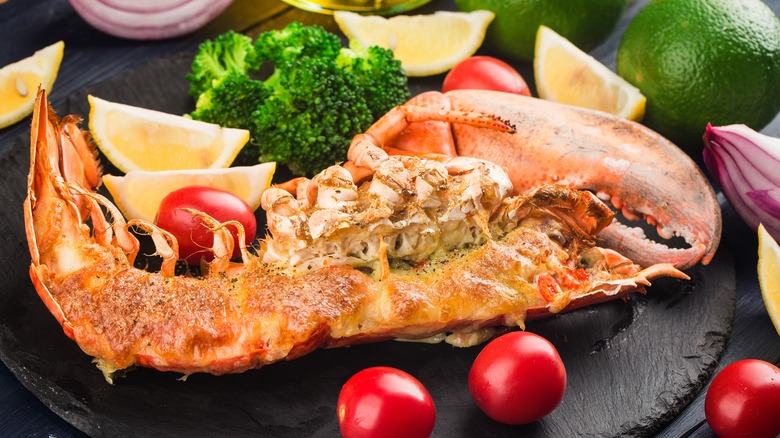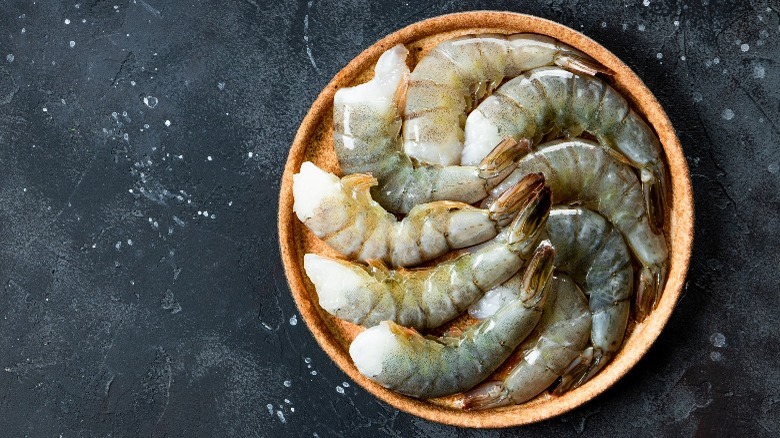This Is What Happens When You Eat Shellfish Every Day
If you're the kind of person who can't get enough shrimp cocktail, baked clams, or lobster meat dripping with butter, you're in good company. According to Seafood Source, the per capita consumption of shellfish in the United States in 2018 was roughly 6 pounds. That's a lot of clams.
Shellfish have been part of the human diet for a while. According to Scientific American, the first bowl of shellfish snacks appears to have been consumed by some of the earliest modern-day humans around 165,000 years ago in a seaside cave in South Africa. Approximately 110,000 years ago, Neanderthals were serving up shellfish dinners in coastal caves in Italy. Linguini and clam sauce anyone?
Fast-forward to the 1700s when more European settlers began to arrive in North America, where the abundant lobster population was a core part of the Native American diet. According to The History Channel, one way the Native Americans prepared lobsters was by wrapping them in seaweed and baking them on hot rocks. Many consider this to be the precursor of the modern-day New England clambake. While shellfish is tasty, there may be pros and cons to eating it frequently.
Eating shellfish daily: the upsides and downsides
According to Healthline, there are a number of good reasons to incorporate shellfish into your diet if you don't have any related allergies. Shellfish is packed with protein, as well as minerals such as iron, magnesium, and vitamin B12, and also healthy fats made up largely of omega-3 fatty acids. Shellfish may help promote weight loss, as well as heart health and brain health, thanks to vitamin B12 and omega-3s.
Shellfish originates in either saltwater or freshwater and is divided into two primary categories: crustaceans and mollusks. Popular crustaceans include shrimp, lobster, and crab; clams, mussels, and oysters fall under mollusks. If you're a crustacean fan looking to boost your protein, that little shrimp is going to give you the biggest serving of protein at 17 grams per 3-ounce portion. As far as mollusks go, crayfish have the most protein at 14 grams (via Healthline).
Of course, if you are allergic to shellfish, be sure to stay away entirely, as consuming shellfish could make you very sick or, worse, could be life-threatening. Another potential downside to eating shellfish is the possible accumulation in your body of metals that have been found in shellfish, such as mercury as well as other contaminants (via SFGate).
According to Today, more research is needed to determine if eating shellfish every day is safe. In the meantime, the latest Dietary Guidelines for Americans suggests eight ounces per week for adults — or roughly two servings — as part of a 2,000-calorie daily intake.


